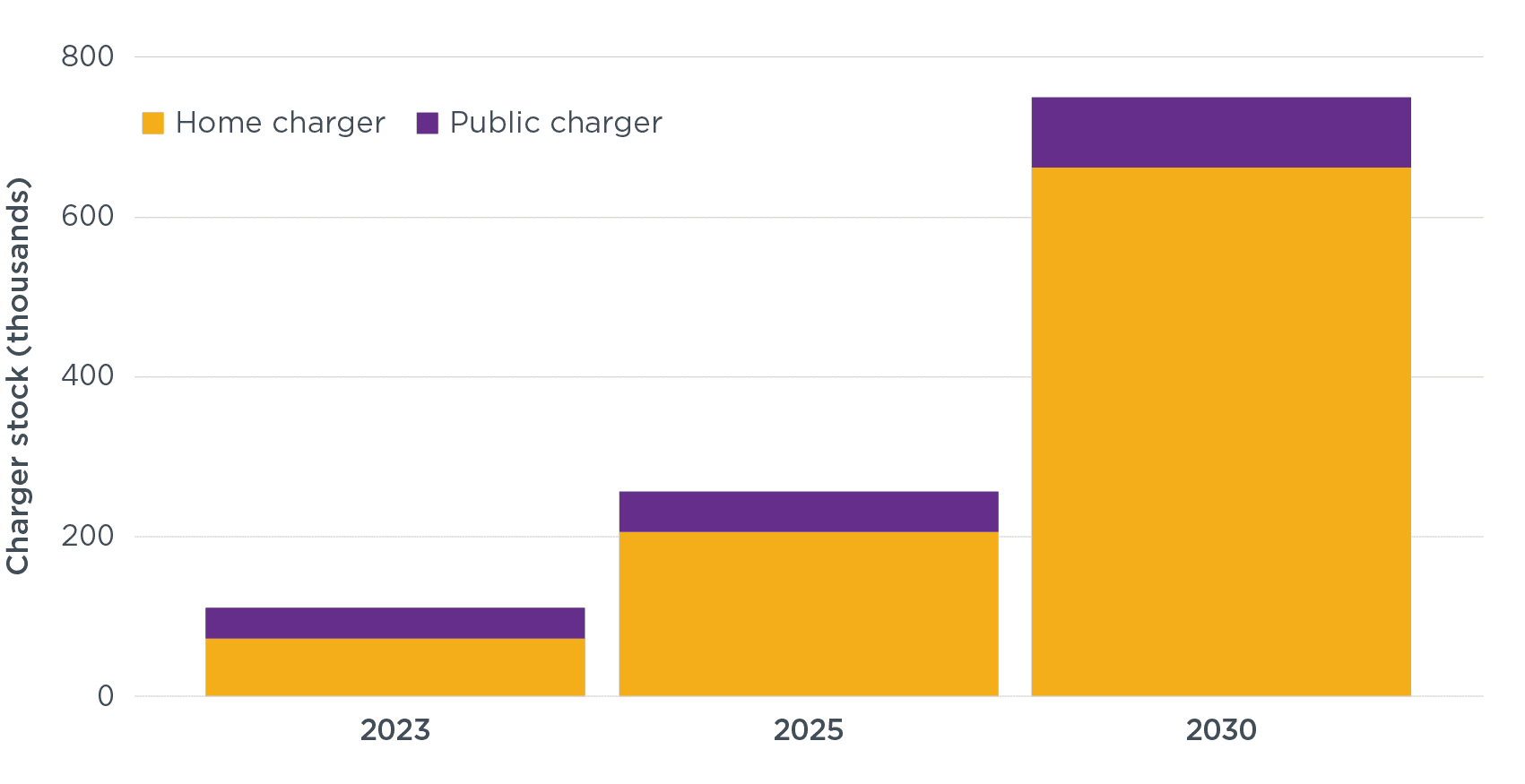Air quality benefits of an accelerated transition to new energy vehicles in Hainan Province, China
Report
Charging up Hainan’s transition to electric vehicles: Assessment of current charging infrastructure deployment and projection of infrastructure needs through 2030
As of 2023, Hainan, China’s electric vehicle (EV) deployment has surged, growing from 33,000 in 2019 to 293,000 by 2023, representing 15% of the province’s total vehicle stock and double the national average. By 2030, the province aims for full electrification across almost all vehicle categories, excluding heavy-duty trucks. This report examines the Hainan Province’s electric vehicle (EV) transition plan, and the infrastructure required to support it.
To meet these ambitious electrification goals, the report emphasizes the critical need for expanding EV charging infrastructure. By 2030, the province will need 750,000 chargers, up from the 110,000 chargers available in 2023. The infrastructure expansion will primarily focus on home chargers, which will make up 88% of the total by 2030.
Public chargers are projected to increase significantly, with the largest gaps in charging infrastructure needs identified in Haikou and Sanya. These cities will require 407,000 and 107,000 new chargers, respectively, to meet demand. The key findings of this analysis support strategies such as maximizing home and workplace charging access, prioritizing direct current (DC) chargers when adding new public chargers, and increasing public charger utilization to ensure infrastructure development aligns with EV deployment.
Figure. Projected charger stock by charger type in Hainan in 2025 and 2030

